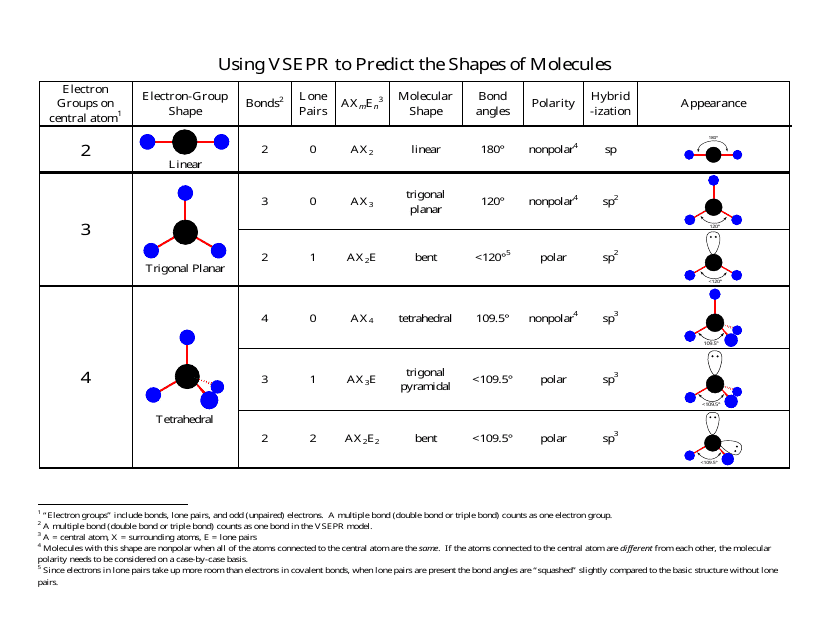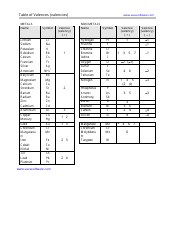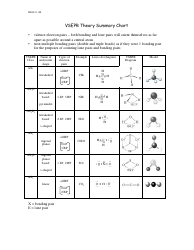Vsepr and the Shapes of Molecules Chart
VSEPR stands for Valence Shell Electron Pair Repulsion theory. It is used to predict the shapes of molecules based on the number of valence electrons and the repulsion between electron pairs. The Shapes of Molecules Chart is a visual tool that shows the common molecular shapes predicted by VSEPR theory.
The VSEPR (Valence Shell Electron Pair Repulsion) chart and the Shapes of Molecules chart are not filed by a specific individual or organization. These charts are part of the scientific knowledge and are widely available in textbooks, online resources, and educational materials.
FAQ
Q: What is VSEPR?
A: VSEPR stands for Valence Shell Electron Pair Repulsion. It is a theory used to predict the three-dimensional shape of molecules based on the repulsion between electron pairs.
Q: How does VSEPR work?
A: VSEPR works by assuming that electron pairs in the valence shell of atoms will try to position themselves as far apart from each other as possible.
Q: Why is VSEPR important?
A: VSEPR is important because the shape of a molecule affects its properties and behavior. Understanding the shape can help predict how the molecule will react or interact with other substances.
Q: What is the Shapes of Molecules Chart?
A: The Shapes of Molecules Chart is a visual representation of the different molecular shapes predicted by the VSEPR theory. It categorizes molecules into various shapes, such as linear, trigonal planar, tetrahedral, etc.
Q: How can I use the Shapes of Molecules Chart?
A: You can use the chart to determine the shape of a molecule by looking at the number of bonded atoms and lone pairs of electrons around the central atom. Find the category that matches the electron arrangement, and you'll find the corresponding molecular shape.
Q: What are some examples of molecular shapes?
A: Some examples of molecular shapes include linear (e.g., CO2), bent or V-shaped (e.g., H2O), trigonal planar (e.g., BF3), tetrahedral (e.g., CH4), and octahedral (e.g., SF6).
Q: Are there exceptions to the VSEPR theory?
A: Yes, there can be exceptions to the VSEPR theory due to factors such as lone pair-lone pair repulsion and multiple bond-lone pair repulsion. However, the VSEPR theory is still a useful tool for predicting molecular shapes in most cases.








